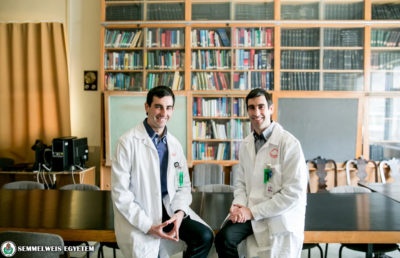
So far, thousands of identical and fraternal twins, same and gender different have joined the Hungarian Twin Registry established at Semmelweis University, which aims to contact all twins in Hungary. With the establishment of the population-based Hungarian twin registry, it will be possible to explore new observations and connections in many fields of science, which can contribute to the preservation of health, the prevention of diseases and the development of more effective treatments. As part of the program, about 160,000 people will receive information about joining the twin register in the forthcoming weeks.
With the development of a twin registry, researchers may also meet identical twins with different health conditions; one might suffering from a disease while the other might be healthy. Therefore, the examination of a given disease of identical twins with almost identical genetic backgrounds may reveal what environmental factor could cause the difference.
“Theoretically, both of them should suffer from the same disease due to their nearly identical genetic background. If this is not the case, it can only be due to environmental factors”, said Dr. Dávid László Tárnoki, Associate Professor, researcher at Semmelweis University, who together with his twin brother, Ádám, has been conducting research related to twins since 2006.
Valid scientific results require studies involving a large number of twins, so they consider it important that all twins in the Hungary receive an information letter on joining the register. The letters are going to be sent out starting from 15 February, 2021 in cooperation with the Budapest Government Office.
About 160,000 people across the country will receive the invitation in the forthcoming weeks. In case of those over the age of 18, each twin must register separately, while in case of those under the age of 18, one of the parents or guardians can do so on the http://ikrek.semmelweis.hu website.
Participation in twin studies is always voluntary and free of charge, and data protection is ensured by strict data protection rules. In addition to participating in scientific research, the members can take part in special programs organized for twins, receive information about Hungarian and international news in the topic related to twins, and also have the opportunity for networking in forums.
Twin research in Hungary started as early as the 1930s, then following the initiative of Dr. Endre Czeizel, geneticist, the Budapest Registry of twin births was introduced on 1 January, 1970.
The initiative to establish the Hungarian Twin Registry started in 2007, when Dr. Ádám Domonkos Tárnoki and Dr. Dávid László Tárnoki visited Dr. Júlia Métneki, a biologist who was among the first in the 70s and 80s to conduct special twin studies in the world, paving the way to creating a twin registry.
Learning of the joint work of the three researchers, they were approached by a number of scientists to launch twin research in various fields, thus forming a group of twin researchers at Semmelweis University.
Eszter Csatári-Földváry
Photo: Semmelweis University – Attila Kovács
Translation: Katalin Illés-Romhányi
Article: https://semmelweis.hu/english/2021/03/one-of-the-worlds-largest-medical-...
